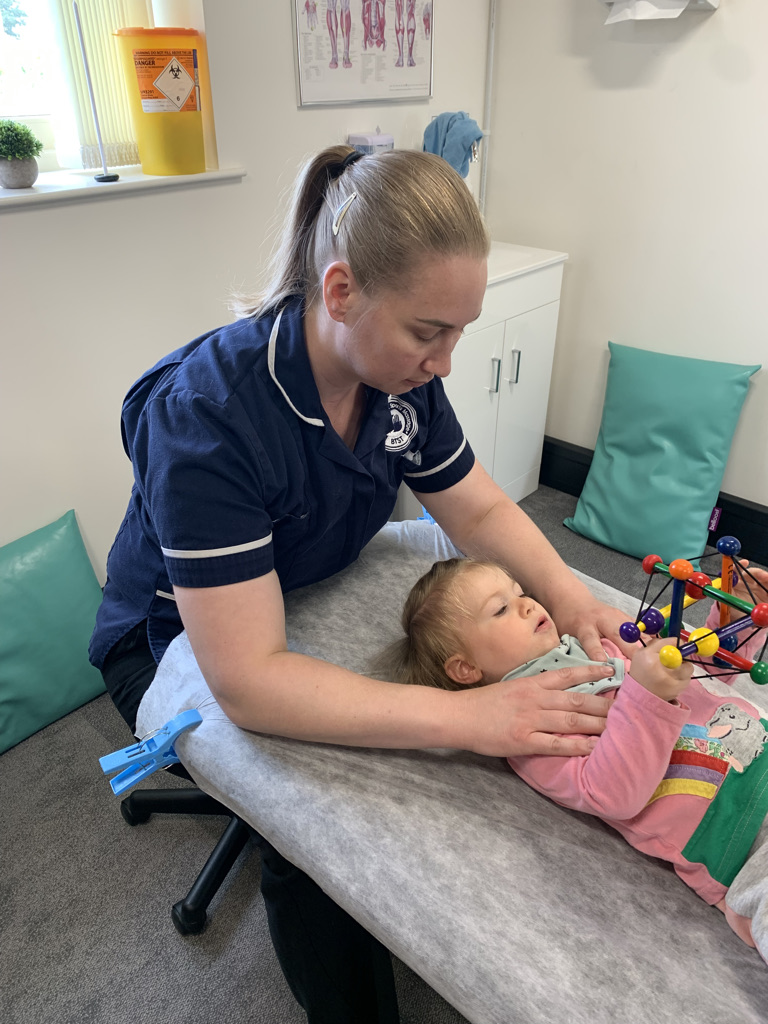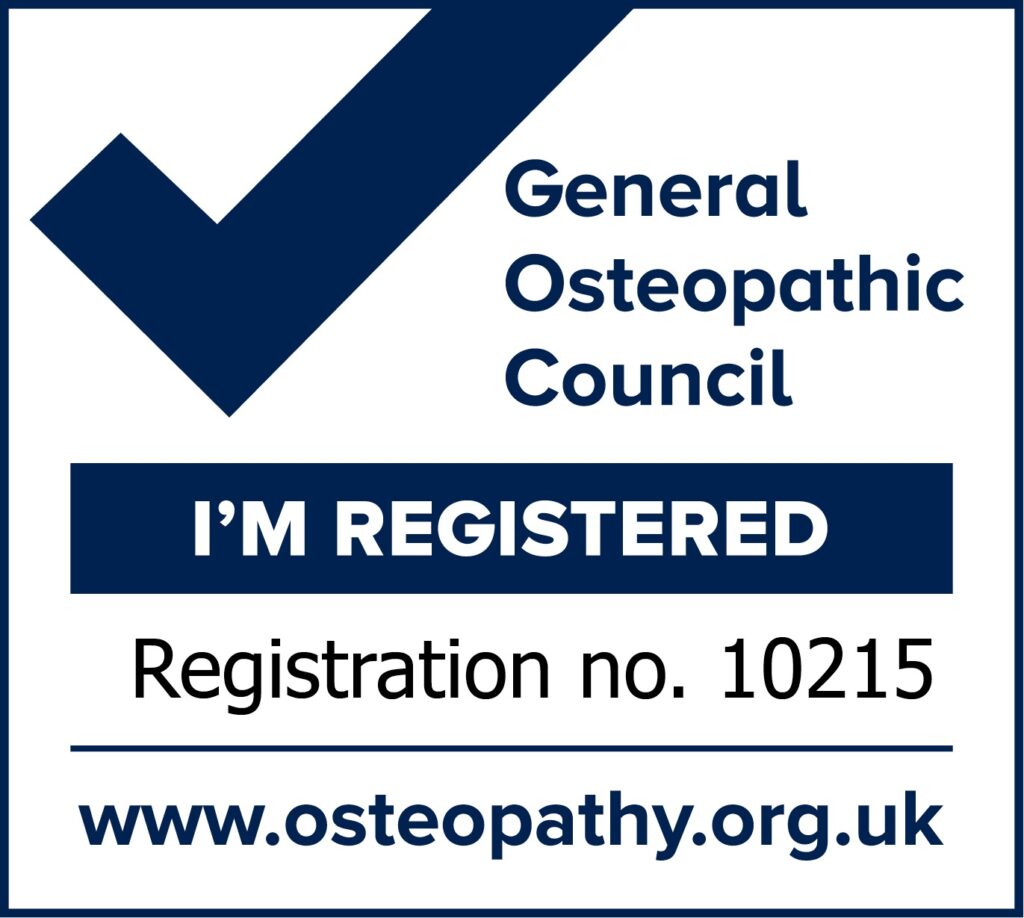Osteopathy is a gentle treatment suitable for babies and children. Osteopaths utilise a range of techniques including stretching, massage and other gentle techniques such as cranial. Cranial techniques are safe, gentle and non-manipulative.
Following specialist post-graduate training, your osteopath will apply their hands to your baby’s head, back, stomach or other areas of the body. Small amounts of pressure are applied to restore ease in the tissues. Osteopaths work to assess a number of contributing factors to the symptoms and will therefore evaluate not only the area which is producing the symptoms, but also associated areas that may be contributing to the issue.
What can Osteopaths help with?
Conditions parents and guardians may seek treatment for their little one includes Colic, Reflex, Flat head, Arching back, Wind, Digestive problems, Torticollis, headaches, Musculoskeletal pain and much much more.
You do not need to consult your GP before you visit an osteopath, although you may wish to do so.
Prices
Initial Consultation and treatment Babies & toddlers (under 5 years) £65
Follow up treatment Babies & toddlers (under 5 years) £45
Initial Consultation and treatment children (5-17 years) £70
Follow up treatment Children (5-17years) £50
What to expect
When you first visit an osteopath you’ll be asked about your child’s current symptoms and medical history. All information will be treated as confidential in accordance with the standards of practice set out by the General Osteopathic Council and the General Data Protection Regulation (GDPR), May 2018.
It is natural in most circumstances to worry about your child’s symptoms and the cause. You can be confident that your osteopath will always complete a routine examination that checks for more serious diagnoses and will advise and discuss with you any further action that might be required.
Prior to your initial appointment, you will be asked to complete a detailed questionnaire relating to your pregnancy, labour and the child’s medical history. During the session, your osteopath will gather any further relevant information before your child is examined. Occasionally we may request you to undress your baby or child to their nappy or underwear. However this is not always necessary and is entirely at your discretion.
After examination, your osteopath will discuss treatment options and you will then jointly decide an appropriate and suitable treatment plan, and the likely associated costs. This plan may involve several visits and, very occasionally, further tests and/or referrals to another appropriate health care professional.
All children under the age of 18 must be accompanied by an adult.
Treatment
Osteopathic care is based on the individual needs of the patient and so varies depending on your age, fitness levels and diagnosis.
Osteopaths use a wide range of gentle hands-on techniques that focus on releasing tension, stretching muscles and mobilising joints. These are often used together with exercise and helpful advice designed to help relieve or manage pain, keep active and maintain the best of health.
Occasionally after the session your baby or child may appear slightly unsettled, this is a normal reaction to osteopathic treatment and often settles quickly. Your osteopath is always on hand to discuss any queries or concerns that you may have.
The health risks associated with having osteopathic treatment are extremely low. If you have any concerns about your treatment, we encourage you to raise them with your osteopath who will be happy to discuss them with you.
What to bring with you
Please bring milk, finger foods, a favourite toy or dummy to entertain them during the session. It is possible to treat a baby whilst she or he is being fed.
Training and regulation
In the UK, the osteopathic profession is regulated by the General Osteopathic Council and by law, an osteopath must be registered with the Council to practise. To remain registered, they must comply with strict regulatory requirements and high standards of professional practice. They must also maintain regular professional development.
These requirements give patients the same sort of guarantees and protection as those given by doctors and dentists.
Osteopaths are trained to degree level attaining either a Bachelor of Science (BSc) or integrated Masters (MOst). Training takes a minimum of four years and includes a requirement to have over 1000 hours clinical experience with patients prior to registration.
Osteopaths are recognised by NHS England as Allied Health Professionals, playing a critical role in the diagnosis, treatment and care of people of all ages.
We are members of the Institute of Osteopathy and the General Osteopathic Council GOSC, who are committed to the support and development of the osteopathic profession.
Membership of the Institute of Osteopathy affords assurances to the public, patients and colleagues, that we provide the highest quality service and care, exceeding the minimum requirements of professional regulation.
For more information on the Institute of Osteopathy, visit www.iOsteopathy.org or call 01582 488455

**All information was directly quoted from the Institute of Osteopathy https://www.iosteopathy.org/wp-content/uploads/2018/08/AboutOsteopathy-6pp-Aug-2018.pdf and includes references from www.nice.org.uk/guidance/NG59 **


© Copyright 2021 BTST Osteopathy And Sports Massage Clinic.